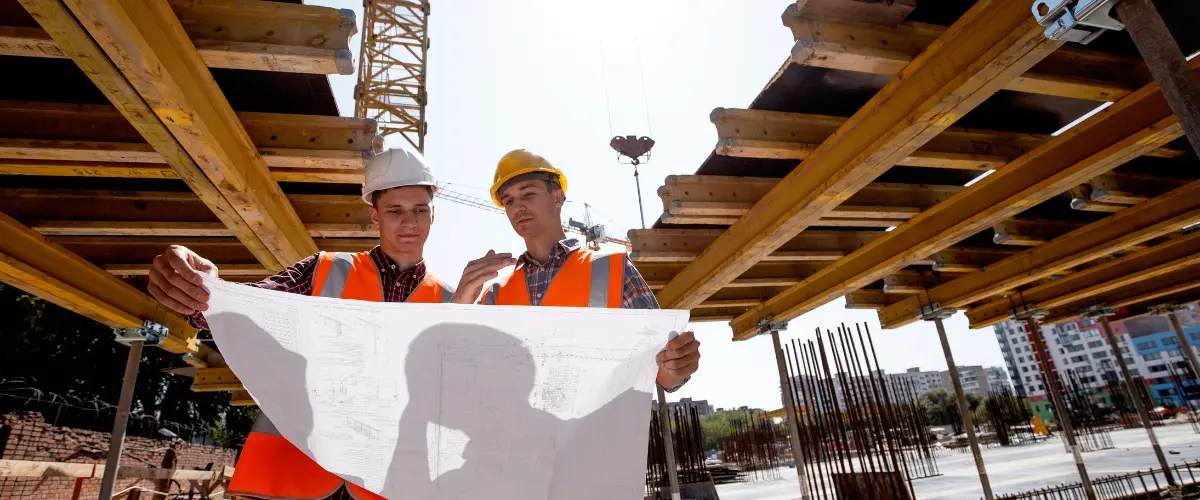Joist, Girder Designing Services Across North America
Optimized, code‑compliant headed stud layouts that make composite floors and roofs stiffer, safer, and more economical — delivered as constructible drawings and BIM‑ready models.
Shear stud layout is a critical aspect of composite steel construction. By welding headed studs to joists or beams and embedding them within the concrete slab, the steel member and slab act as a single unit. This composite action improves stiffness, reduces deflection, and can increase strength while optimizing material use. At Consac, our engineers determine the number, size, and spacing of studs to meet performance goals and the governing codes, then deliver a placement plan that is safe to build and easy to inspect.
What We Do
- ✓ Compute required composite shear flow and translate to stud counts per span zone.
- ✓ Lay out constructible stud patterns tied to deck direction & pour stop conditions.
- ✓ Produce clean stud schedules, bills of materials, and placement keys.
- ✓ Coordinate with joist/beam profiles, penetrations, and mechanical openings.
Detailing Guidelines We Apply

Placement & Spacing
- Respect min/max spacing & edge distance per standards.
- Use denser spacing near supports; wider mid-span.
- Align with deck rib geometry.
Deck Coordination
- Account for deck orientation.
- Show haunch/seat, pour stops, edge forms.
- Note special conditions at laps/closures/sleeves.
Welding & Inspection
- Weld studs to clean base metal; prep as required.
- Note arc strikes, ferrule removal, acceptance criteria.
- Identify testing frequency per documents.
Joists vs. Rolled Beams
- Detail seat/haunch for joists; avoid critical weld zones.
- For rolled beams, coordinate flange thickness & camber.
Our Design & Detailing Process
Typical Schedules & Notes
Values are project‑specific. We provide exact sizes, counts, and spacing limits in your job’s schedule.
| Mark | Stud Size (dia × ht) | Base Member | Zone A (near supports) | Zone B (transition) | Zone C (mid‑span) | Total / Member | Remarks |
|---|---|---|---|---|---|---|---|
| SS‑01 | Ø<to be set> × <to be set> | Beam B1 (W‑shape) | @ <X> mm c/c over 0.2L | @ <Y> mm c/c over 0.3L | @ <Z> mm c/c over remaining | <Count> | Deck ⟂ to beam |
| SS‑02 | Ø<to be set> × <to be set> | Joist J3 (LH‑Series) | @ <X> mm c/c over 0.15L | @ <Y> mm c/c over 0.35L | @ <Z> mm c/c over remaining | <Count> | Deck ∥ to joist |
Typical General Notes (Excerpt)
What You Receive
Clear drawings, coordinated models, and procurement-ready schedules—packaged for real-world use.
Drawings
Fabrication-ready clarity- Plan-based stud placement with zone keys & schedules
- Enlarged details at edges, penetrations & atypical connections
- Welding / inspection notes with callouts
Digital Models
Coordinated & clash-checked- BIM (Revit / IFC / TEKLA) with stud families & assemblies
- Clash reports and coordination views
Schedules & BOM
Procurement-ready data- Stud count per member and per zone
- Procurement-ready bill of materials
What We Need to Start
| Category | Files / Data | Notes |
|---|---|---|
| Structural | Design drawings, beam/joist schedule, span data, camber | Identify composite vs. non‑composite members |
| Loads | DL, LL, superimposed DL, construction loads | Any partition or storage loads |
| Slab/Deck | Deck profile, orientation, slab thickness, concrete strength | Edge forms, pour stops, fire rating |
| Coordination | MEP penetrations, sleeves, openings | Provide latest MEP model or markups |
| Standards | Project specifications and codes | Welding/inspection requirements |
